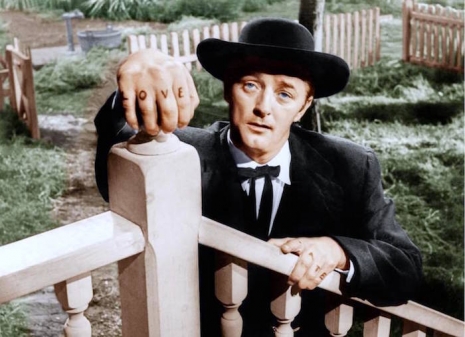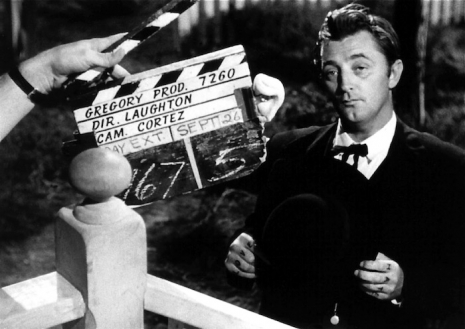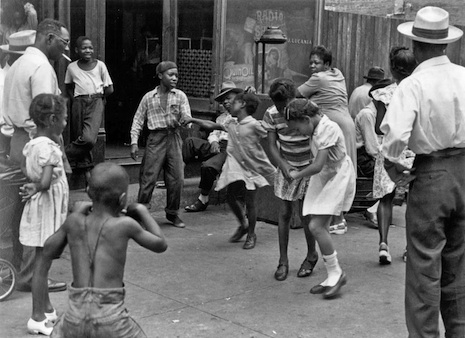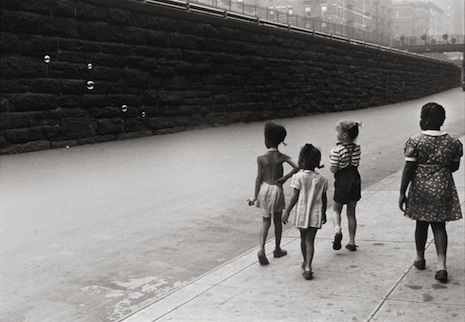
Robert Mitchum played a “diabolical shit” in The Night of the Hunter. Mitchum was Harry Powell—a twisted serial killer who disguised himself as a fire and brimstone reverend to find the location of some stolen loot. In order to get to it, Powell has to marry Willa Harper (Shelley Winters) and become the stepfather to her children—John (Billy Chapin) and Pearl (Sally Jane Bruce). It soon becomes obvious that Powell is not going to be married for very long.
Upon its release, The Night of the Hunter was reviled by critics and audiences alike. The press hated everything about it. They hated the script by novelist and poet James Agee. They loathed Robert Mitchum’s “hammy” acting. They denounced Charles Laughton for his weird, bizarre and utterly perverse direction. They decried his deliberate use of movie sets to tell his story. They also hated his use of black and white film. This was the Technicolor fifties, they said, the nuclear age of rock ‘n’ roll, hula-hoops, Cinemascope, and drive ins. This was no place for a ramped-up Southern Gothic melodrama. Audiences agreed and the film tanked at the box office.
It was actor Charles Laughton’s first and only film as director. The negative reviews hurt so much that he abandoned any hope of opening up a new career as Hollywood director. The screenplay was adapted by James Agee from the novel by Davis Grubb. Agee was the screenwriter of The African Queen and had written the text to accompany Walker Evan’s ground breaking photographs in Let Us Now Praise Famous Men. Agee died not long after the film was completed. The story of The Night of the Hunter had been inspired by the case of the real life serial killer Harry Powers who murdered two widows and three children in the 1930s. Powers sought out his victims through the ads in newspapers lonely hearts’ ads.

Robert Mitchum was convincingly deranged as Powell in The Night of the Hunter. His hands were tattooed with “LOVE” and “HATE” above the knuckles—as his character explained in the film:
Ah, little lad, you’re starin’ at my fingers. Would you like me to tell you the little story of Right Hand-Left Hand - the story of good and evil?
H-A-T-E! It was with this left hand that old brother Cain struck the blow that laid his brother low.
L-O-V-E. You see these fingers, dear hearts? These fingers has veins that run straight to the soul of man. The right hand, friends! The hand of love!
Now watch and I’ll show you the story of life. These fingers, dear hearts, is always a-warrin’ and a-tuggin’, one agin’ the other.
Now, watch ‘em. Ol’ brother Left Hand. Left hand, he’s a-fightin’. And it looks like LOVE’s a goner. But wait a minute, wait a minute! Hot dog! LOVE’s a winnin’? Yes, siree. It’s LOVE that won, and ol’ Left Hand HATE is down for the count!
Many a young punk was said to have copied Mitchum’s homemade LOVE/HATE tattoos—no doubt as badge to their stupidity. Laughton originally wanted Gary Cooper to play the evil reverend—but he nixed the idea on the grounds it would damage his good guy image. Mitchum was far less precious. He jumped at the chance to play Powell—allegedly fighting off interest from both Laurence Olivier and John Carradine. Mitchum was unforgettable—a performance only rivalled by his later turn as Max Cady in Cape Fear.
Laughton cast Shelley Winters as the pivotal character Willa Harper—whose murder leads Mitchum to chase her children across the country. Winters gives a restrained performance that only emphasizes the horror of her misfortune. The children were played by Billy Chapin and Sally Jane Bruce. Laughton had considered his wife Elsa Lanchester for the role of the old woman who protects the children from Mitchum. Lanchester suggested he try silent movie star Lillian Gish—a perfect choice for such a strange, disturbing and dreamlike movie.
Filmed in the Fall of 1954, Laughton created an unforgettable Expressionist style—imbued with menace and filled with allegory—along with the cinematographer Stanley Cortez—cameraman from Orson Welles’ The Magnificent Ambersons and later Sam Fuller’s classic Shock Corridor. The film had a budget of around $800k which meant they were unable to film on location—hence the use of indoor film sets—something Laughton used to great stylistic effect. Today The Night of the Hunter is considered a classic—one of the Library of Congress’ films deemed “culturally, historically, or aesthetically significant.”

Robert Mitchum with director Charles Laughton.

More behind the scenes photos from ‘The Night of the Hunter,’ after the jump…









